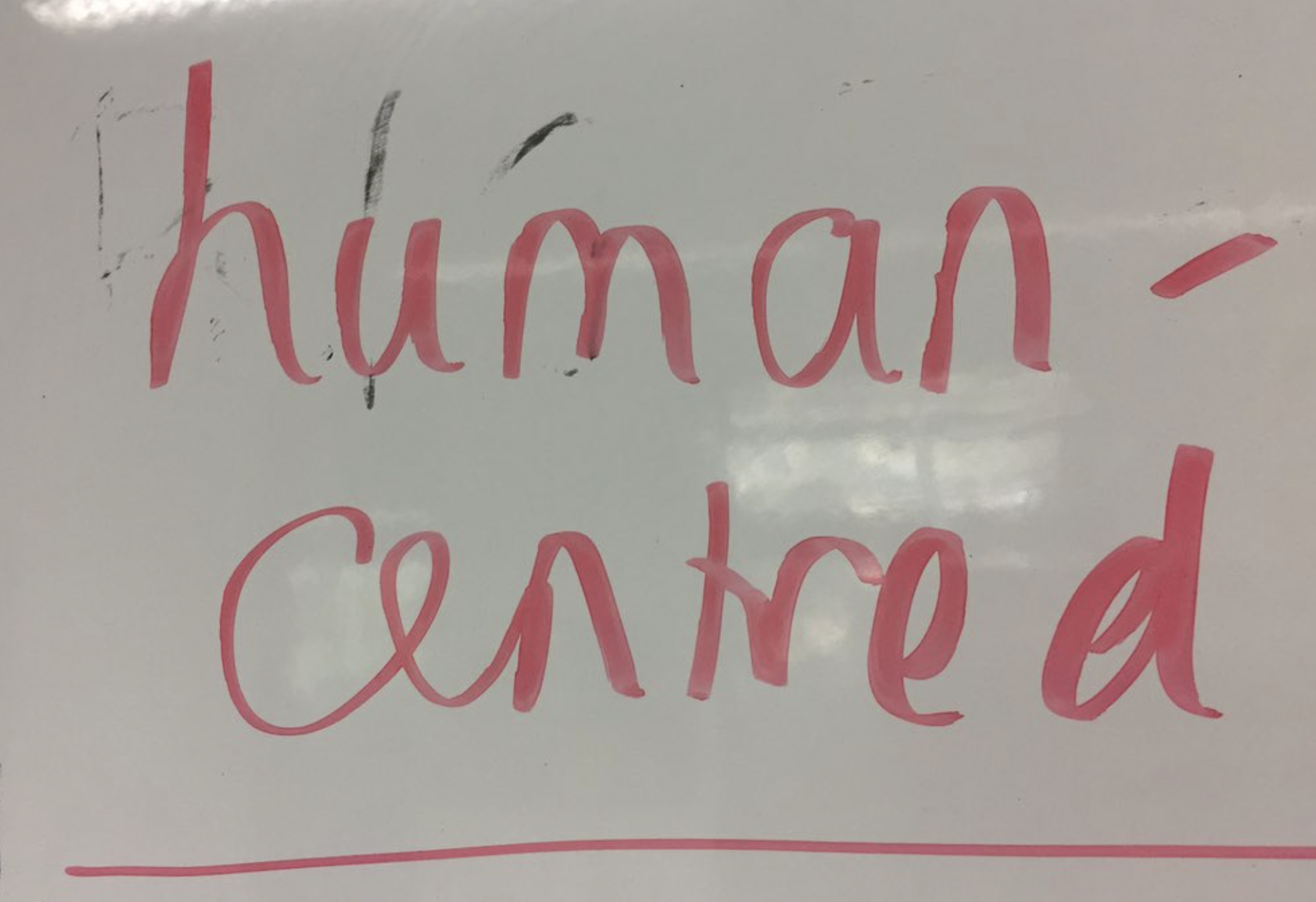I don’t feel like I’ve been doing a lot of refusing lately.
Lee Skallerup Bessette, ‘Refusal‘
1.
It’s 2019, I’m sitting at a thing, and a senior university leader is addressing us with a vision. My attention is drifting, I’m cold and I’ve had too much coffee. The vision seems familiar. And then there it is:
“We think the casualisation problem will be solved by AI in about 15 years or so.”
It’s like hearing a breaking plate in the restaurant kitchen. Somewhere, small pieces of an idea about what it means to be a university are being swept into a pan.
2.
In Australia, we’ve rounded the bend into the final third of the Autumn semester where we all jumped online in week 3. Many Australian universities have already announced their intention to deliver teaching fully online in Spring. Students want to know why this is, when we are likely to be able to return to campus during that time?
The answer is at the heart of the problem. To manage pandemic risks, the twinned fundamentals of the higher education business model will be the last to resume: air travel, and university lectures. Together, their absence exposes the long-term assumptions about what it means to be a university that have suddenly gone so wrong.
First, the international students who are trawled in by professional degrees with solid graduate futures need to be able to get here. International revenue cross-subsidises all the other core university activities including professional staffing, and research. As internationalisation experts have been saying through gritted teeth, it’s really hard to imagine any other Australian flagship industry being benched by government without some kind of rescue package.
We should keep saying this. But we should also be careful about making the trade success of international higher education our big headline. We should ask ourselves how this public lobbying for a return to ordinary exploitation might come across to international students themselves. The sight of international students queueing for free food because the government won’t include them in emergency welfare provisions should be enough to get us thinking: are we looking after them properly? Are we caring for them in our communities and campuses the way we would hope our own loved ones would be cared for if they were studying somewhere else?
This takes us to the second exposed dependency: that wherever universities prioritise content delivery over student experience, they will take longest to return to campus. I’ve written about lectures before, here and here. Nutshell edition: lectures are the most bang-for-buck staffing ratio of the whole set up. 500 students in one room being taught by one salaried academic who would be paid anyway: ka-ching.
There are hygienic alternatives to in person lecture attendance that will get us through next semester, and we already had most of them: textbooks, slideshows, lecture recordings, slabs of content stacked in the LMS. Some of these are being done well, some are not. Some involve significant hidden work to create or keep up to date.
But there are also reasons to stop lecturing at all, in any medium.
Now that we’re in this for the rest of the year, let’s think more carefully about why we prioritise content delivery as peak teaching. If we weren’t trying to make cheap online copies of broken offline practices, how would we make higher education pedagogy afresh, online first and engagement centred? We wouldn’t just call something an “online lecture” and hope it sticks.
We’d start from scratch, and that is the freedom in front of us.
3.
As it happens, the problem isn’t pedagogy at all. Content-centred teaching derives from a focus on resources, not learning: university timetabling, capital investment in theatres, and workload calculations. Measuring teaching workload is a dismal haggle that keeps anyone from being able to account for the time teaching actually takes, instead marvelising it into a fiction about the size of an ideal fish, being sold in a buyer’s market. The seller bears the cost of catching and carrying the actual fish, and can pass on to the buyer only what the buyer chooses to be weighed.
This con persists because we have all been trained to accept that the price of working in universities is one we should feel privileged to pay. Our broad acceptance of career dues is the reason higher education teaching has survived casualisation, and now operates for the majority of teachers as a labour market that delivers subsistence rather than sustainability. It’s how universities have insulated themselves against the one risk that has yet to play out in this pandemic: the refusal of labour to continue to go along with this.
But our habit of going along with things because they could be worse will now be tested as things actually get worse. Australian universities are letting go of their casual workers across teaching and service divisions. The proposition that this will deliver savings that can be covered by the salaried workforce is a particularly magical bit of fishmarketing, and yet we are all sitting in meetings where exactly this trick is being explained.
Here’s one example. If you google RMIT, one of things you’ll find this week is this image, widely shared:

Because “volunteers needed” was apparently confusing, RMIT clarified.
With an aim for undisrupted learning, some members of our academic community may be requested to providesupport in different areas in semester two, with a focus on learning and teaching. This communication was in no way asking people to undertake unpaid voluntary work
reported by Stephen Matchett, ‘RMIT Calls for Volunteers to Teach‘, Campus Morning Mail, 18 May
OK, let’s be real, this isn’t unclear: voluntary means what it says on the tin. Researchers are being asked to volunteer to do work that they hadn’t been contracted to do, so that other people’s jobs can be cut. The fantasy that full-time researchers being drafted in to teaching at short notice will save the labour cost of teaching is the size of an imaginary unicorn fish in a market that has collapsed.
Meanwhile all universities will ask for voluntary pay cuts, which will also be hard to refuse. And in a staggering lack of tact, casual workers who log into university websites are currently being met with a request to make a voluntary donation through workplace giving to a rescue fund for the institution that is just about to broom them off campus.
What if we don’t go along with this? Then what happens?
4.
Many people who work in universities around the world are starting to wonder what happens if we ask these hard questions. It’s not just about whether we come back to campus in the Australian Spring or the northern hemisphere Fall. It’s not just about how we return to each other’s company in hygienic ways.
It’s also about what we have learned about how universities operate, and how taking volunteered labour for granted has been core to the business model. Above all, it’s about what we’ve learned about ourselves and our codependent ways of voluntarily going along.
Through renewed conversations and reflections with colleagues in Australia and around the world, I have found my thoughts cohering on the question of whether we can create either labour justice or educational justice without learning how to refuse more effectively.
Donna Lanclos suggests that we should learn to listen to the voices of those who refuse, and I now think that this means we need to learn to listen first to ourselves. We need to attend to our own flinching when we hear or read something that really confronts our values. We need to notice ourselves exercising agency in getting to no, not just endlessly being manipulated into yes. Above all we need to develop a new language for refusal that can hold ground in negotiation, without giving up hope.
Lee Skallerup Bessette has written a compelling new piece about refusing the affective labour demanded of university workers during the pandemic. Lee’s piece introduces the wonderful ‘Refus Global Manifesto‘ that is really worth your time. Inger Mewburn has called out the way we manage the PhD in Australian universities (a pipeline that is one and the same with the way we recruit skilled and committed academic casuals to teach). Liz Morrish has encouraged us to push back against the subordination of our homes and family lives to university brand panic.
These pieces are in conversation. We are learning from each other how to apply our labour to just refusal, in order to develop a vision for education that we can live with. We’ve been asked so far to accept the pivot on its own terms, and to embrace its end goal as our own. Instead, we are now all thinking quietly about how to refuse to go along with—and go back to—the things that were already broken, and to the time when even more broken solutions were being touted as the next shiny thing.


One Responses
Kate, what a powerful piece. Thank you for writing this. You have such a beautiful way with words.
One of the reasons I gave up my job was for my mental health. I just couldn’t go on literally banging my head against the desk everyday, my refusal was my resignation. However I do still have to drink from the well of HE to make a living, so I am only too well aware of the pressures everyone is under right now. I hope I can be an external ally to those I work with, helping them refuse and more importantly allowing them to take a different direction, and small steps away from the content driven, dreaded “p” word.